Field Day
11/2/2008
 The term "field day" must have an interesting derivation. One definition offers "an occasion or opportunity for unrestricted activity, amusement, etc." Well, we've certainly had a field day here at Proctor!
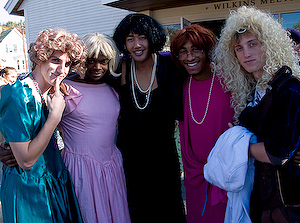
Another definition goes, "a day devoted to outdoor sports or athletic contests, as at a school." Yup. That works, too, but well get back to that at the end of this page. Then there's "an outdoor gathering or outing." That's the kind of field day the Land Use Office sponsored Saturday morning.

In honor of Proctor's designation as the state's Community Tree Farm for 2008, tree farmers, neighbors and friends of the school joined both a forester and a wildlife biologist from the UNH Cooperative Extension Office for an educational tour of our lands. A pre-eminent mycologist on sabbatical from the U. of Alaska brought a wealth of knowledge regarding the estimated 70,000 classifications of fungi whose relationship with flora is complex and complementary.
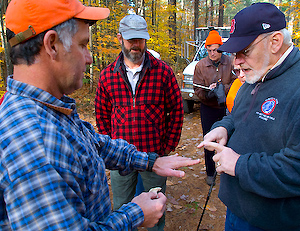
At the sandy, pine stand known as "the Triangle," he described how fungi attract, and enable the finest roots to absorb, nutrients. This area was carefully logged three years ago, with a strategy that is yielding both healthier trees and diversification of wildlife.

Saturday's field day repeatedly illuminated the conflicting factors that must be weighed in ethical and sustainable land use management. For example, how do we best proceed with a mature stand of maple and oak on a sixty acre parcel immediately north of Hopkins Pond?

Hopkins Pond, and the trails that loop around and above it, represent a high-use recreation area--one of Proctor's most precious natural resources. Yet to ignore the value of the existing trees, and the potential value of the trees that would be "released" (to grow healthier) via selective harvesting, would be both financially and educationally irresponsible. A low-impact access road has been created, and a staging area will be cut and utilized at this site.

The long term plan is for this site to yield high-quality sugar maple and oak. Dave Pilla explains that we do not plant. but rely on natural seeding, a practice that has been generally adopted in New Hampshire. This tilly, glacial soil will serve us well, and the quantity of "hard mast" (acorns, etc.) is impressive this year. Every effort will be taken to protect the local ecosystem. Below, we see the outflow from Hopkins Pond.
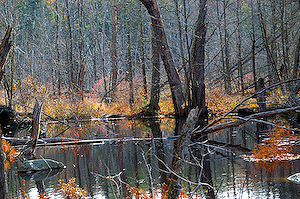
Moving on to a third site, we learn that--despite the intrusion and disruption of a logging staging area--it can become a valuable site for wildlife browsing and a succession process that encourages valued aspen.
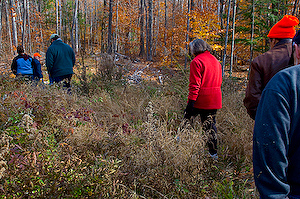
We learn that basic forestry practices are ever-evolving. Only a few decades ago, logging sites were cleared of all residual wood pulp and debris. Studies proved that this process depleted natural nutrients from the soil. Today, we leave coarse, woody debris behind. Below, we see the remnants of a "pull ford," a skidder bridge over a small stream constructed of tree "stems" laid in line with the stream. The stream experiences minimal disruption. When the logging operation ends, the ford is pulled back out of the stream. We learn that culverts are less attractive, because some fish and wetland fauna will not pass through a pipe.
I almost forgot! There is that definition of field day that goes, "a day devoted to outdoor sports or athletic contests, as at a school." Saturday afternoon, the varsity football team had a field day by beating a previously undefeated KUA squad with a walk-off field goal as time expired, by the score of 42-40.
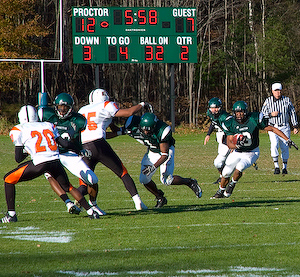
The Hornets finish against Holderness School (away) next Saturday at 1:00. One way or another, it will be a field day!
|
|





